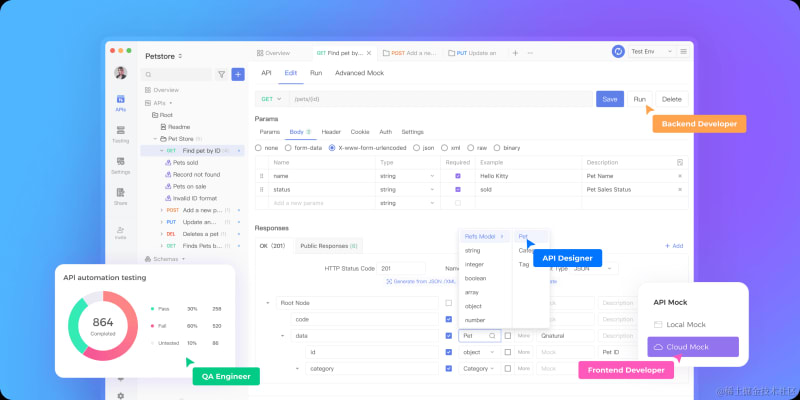Over the past decade, Google Cloud Platform (GCP) has undergone a remarkable evolution, growing from its inception in 2008 as an internal infrastructure of Google to becoming a powerhouse in the realm of cloud computing. Leveraging the advanced technology that underpins Google’s renowned products such as Search and YouTube, GCP has expanded its global infrastructure significantly, cementing its position as a key player in the industry.
GCP’s Expansive Infrastructure
Regions and Availability Zones
GCP now operates in over 30 regions worldwide, each equipped with multiple availability zones (AZs). These AZs serve as isolated locations within a region, ensuring redundancy and fault tolerance to maintain uninterrupted service.
Points of Presence (PoPs)
With hundreds of PoPs strategically positioned globally, GCP has established a vast network to minimize latency, improve connectivity, and enhance overall performance for users worldwide.
Sections Overview
Section 1: Google Cloud VPCs
Creating Secure Virtual Networks
Google Cloud VPCs play a crucial role in cloud computing, offering a robust solution for creating virtualized networks across all GCP regions. These networks serve as the foundation for hosting and managing cloud resources securely.
Key Features
Global Network Span: VPCs span across all GCP regions, providing a unified network infrastructure.
VPC Network Peering: Facilitates private communication between different VPCs, ensuring secure resource sharing.
Flexible IP Address Allocation: Supports scalable allocation of IP addresses, vital for growing businesses.
Section 2: Fault Tolerance and High Availability in Google Cloud
Uninterrupted Operations
GCP excels in ensuring fault tolerance and high availability, crucial for businesses’ continuous operations even in the face of potential failures.
Fault Tolerance
Redundant Systems: GCP employs redundant systems and data replication to prevent service disruptions and data loss.
High Availability
Geographically Distributed Data Centers: GCP’s geographically distributed data centers and network redundancy minimize downtime, ensuring operational continuity.
Section 3: Google Compute Engine
Scalable Virtual Machine Instances
Google Compute Engine (GCE) offers scalable and flexible VM instances to cater to diverse computing needs, from general-purpose applications to high-performance computing.
Statistics and Classes
General-Purpose Workloads: Balanced CPU, memory, and disk options like E2, N2, and N2D series.
Memory-Optimized Workloads: Designed for memory-intensive tasks, with options like the M2 series offering up to 12TB of memory.
Compute-Intensive Workloads: High-performance processors in the C2 series for CPU-intensive tasks.
Accelerator-Optimized Workloads: Utilizing GPUs with A2 VMs for tasks requiring parallel processing capabilities.
Scale-out Workloads: Optimized for large-scale cloud-native applications, offering efficient scaling options.
Section 4: Google Cloud Storage
Highly Scalable Object Storage
Google Cloud Storage provides highly scalable and secure object storage solutions, designed to handle vast amounts of data while ensuring accessibility and reliability.
Key Components
Buckets: Basic containers for data storage, globally unique and used to organize and control access.
Objects: Data stored within buckets, each object comprising the file and accompanying metadata.
Storage Classes: Four storage classes tailored to different access needs and cost efficiencies.
Section 5: Stages of Development in Google Cloud
Structured Development Journey
The development process in Google Cloud unfolds through several stages, each equipped with specialized tools and services to enhance efficiency and productivity.
1. Code
Cloud Code: Integrated Development Environments (IDEs) for cloud-native application development.
Google Cloud SDK: Command-line tool for interacting with GCP services.
2. Build
Cloud Source Repositories: Private Git repositories for version control.
Cloud Build: Continuous integration and delivery platform.
Artifacts: Artifact Registry for storing and managing container images and other artifacts.
3. Deploy
Cloud Run: Fully managed platform for deploying containerized applications.
Google Kubernetes Engine (GKE): Managed services for deploying and managing applications using Kubernetes.
Deployment Manager: Infrastructure-as-code service for automating deployment and management.
Section 6: Smart Analytics in Google Cloud
Data Transformation for Insights
Smart Analytics in GCP offers a suite of tools and services to transform data into actionable insights across various domains.
Solutions Offered
Data Warehouse Modernization: Migrating data to GCP for advanced forecasting and customer behavior prediction.
Streaming Analytics: Real-time processing and analysis of streaming data.
Business Intelligence: Utilizing BI tools for cloud spend optimization and deriving strategic insights.
Data Science: Supporting the ingestion and analysis of vast datasets for valuable insights.
Section 7: Databases in Google Cloud
Tailored Database Solutions
GCP offers a diverse range of database services to meet specific storage requirements, whether relational, key-value, document-based, or in-memory.
Types of Databases Offered
Relational Databases: Cloud SQL, Cloud Spanner, BigQuery.
Key-Value Databases: Bigtable.
Document-Based Databases: Cloud Firestore, Firebase Realtime Database.
In-Memory Databases: Memorystore.
Section 8: Cloud Monitoring in Google Cloud
Comprehensive Monitoring and Management
Cloud Monitoring in GCP provides a suite of tools and services to track the performance, availability, and health of applications and infrastructure.
Key Features
Comprehensive Monitoring Capabilities: Monitors a wide range of services, offers detailed insights, and provides application performance management.
Alerting and Dashboards: Customizable alerts and dashboards for real-time visibility into cloud resources.
Section 9: Serverless Computing in Google Cloud
Focus on Code, Not Infrastructure
Serverless computing in GCP allows developers to build and run applications without managing underlying infrastructure, enhancing agility and cost-effectiveness.
Key Aspects
Cloud Run: Fully managed platform for deploying containerized applications.
Cloud Functions: Lightweight, event-driven compute solution.
Service Integrations: Facilitates automation and connection of various cloud services.
Section 10: Deployment Tools in Google Cloud
Efficient Deployment and Management
Google Cloud Platform offers robust tools to streamline the deployment and management of applications and services.
Key Deployment Tools
Google Cloud Deploy: Managed continuous delivery service.
Cloud Shell: Online development and operations environment accessible through a browser.
Conclusion
In conclusion, Google Cloud Platform emerges as a comprehensive solution provider in the ever-evolving landscape of cloud computing. From its secure and scalable infrastructure to its advanced analytics tools and efficient deployment mechanisms, GCP empowers businesses and developers to innovate and thrive in the digital age. Whether it’s hosting applications, managing data, or monitoring performance, GCP offers the tools and expertise needed to tackle diverse challenges and drive growth in today’s dynamic environment.


